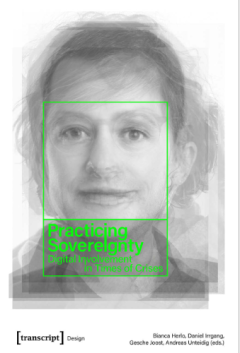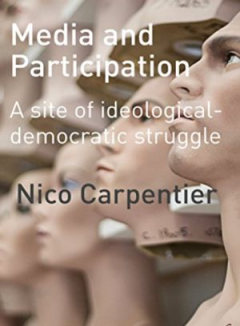Filter by

Stories: Screen Narrative in the Digital Era
Stories are perceived as central to modern life. Not only in narrative entertainment media, such as television, cinema, theater, but also in social media. Telling/having "a story" is widely deemed essential, in business as well as in social life. Does this mark an intensification of what has always been part of human cultures; or has the realm of "story" expanded to dominate twenty-first centur…
- Edition
- -
- ISBN/ISSN
- 9789048537082
- Collation
- -
- Series Title
- -
- Call Number
- 808.02 STO s

Practicing Sovereignty Digital Involvement in Times of Crises
Digital sovereignty has become a hotly debated concept.
- Edition
- 1
- ISBN/ISSN
- 9783839457603
- Collation
- -
- Series Title
- -
- Call Number
- 372.34

The Petroleum Manga a Project
The Petroleum Manga, first conceived of and rendered as 10-foot banners printed on Tyvek for gallery installation is now reproduced in book form. Originally, manga was used in Japanese to refer to whimsical drawings or picture books.
- Edition
- -
- ISBN/ISSN
- 9780615965963
- Collation
- -
- Series Title
- -
- Call Number
- 660.284

The personality cult of Stalin in Soviet posters, 1929–1953 Archetypes, in…
From 1929 until 1953, Iosif Stalin’s image became a central symbol in Soviet propaganda. Touched up images of an omniscient Stalin appeared everywhere: emblazoned across buildings and lining the streets; carried in parades and woven into carpets; and saturating the media of socialist realist painting, statuary, monumental architecture, friezes, banners, and posters. From the beginning of the …
- Edition
- -
- ISBN/ISSN
- 9781760460624
- Collation
- -
- Series Title
- -
- Call Number
- 741.670947

Media and Participation A site of ideological-democratic struggle
Participation has become fashionable again, but at the same time it has always played a crucial role in our contemporary societies, and it has been omnipresent in a surprisingly large number of societal fields.
- Edition
- -
- ISBN/ISSN
- 9781841504070
- Collation
- -
- Series Title
- -
- Call Number
- 070.1

Making Futures Marginal Notes on Innovation, Design, and Democracy
Experiments in innovation, design, and democracy that search not for a killer app but for a collaboratively created sustainable future. Innovation and design need not be about the search for a killer app. Innovation and design can start in people's everyday activities.
- Edition
- -
- ISBN/ISSN
- 9780262027939
- Collation
- -
- Series Title
- -
- Call Number
- 307.1

How to Relate
Wissenschaften, zwischen gebautem Raum und sozialem Körper, zwischen theoretischem und poetisch-künstlerischem Schreiben und Sprechen, zwischen Form, Material und Handlung
- Edition
- 1
- ISBN/ISSN
- 9783839457658
- Collation
- -
- Series Title
- -
- Call Number
- 302.224

How and Why to Read and Create Children's Digital Books
How and Why to Read and Create Children's Digital Books outlines effective ways of using digital books in early years and primary classrooms, and specifies the educational potential of using digital books and apps in physical spaces and virtual communities.
- Edition
- -
- ISBN/ISSN
- 9781787353473
- Collation
- -
- Series Title
- -
- Call Number
- 025.042

Fashion Myths A Cultural Critique
Besides products and services multinational corporations also sell myths, values and immaterial goods.
- Edition
- -
- ISBN/ISSN
- 9783837624373
- Collation
- -
- Series Title
- -
- Call Number
- 746.92

Fashion Meets Socialism Fashion industry in The Soviet Union After The Secon…
This book presents, above all, a study of the establishment and development of the Soviet organization and system of fashion industry and design as it gradually evolved in the years after the Second World War in the Soviet Union, which was, in the understanding of its leaders, reaching the mature or last stage of socialism when the country was firmly set on the straight trajectory to its final …
- Edition
- vol. 20
- ISBN/ISSN
- 9789522226655
- Collation
- -
- Series Title
- -
- Call Number
- 746.92
 Computer Science, Information & General Works
Computer Science, Information & General Works  Philosophy & Psychology
Philosophy & Psychology  Religion
Religion  Social Sciences
Social Sciences  Language
Language  Pure Science
Pure Science  Applied Sciences
Applied Sciences  Art & Recreation
Art & Recreation  Literature
Literature  History & Geography
History & Geography